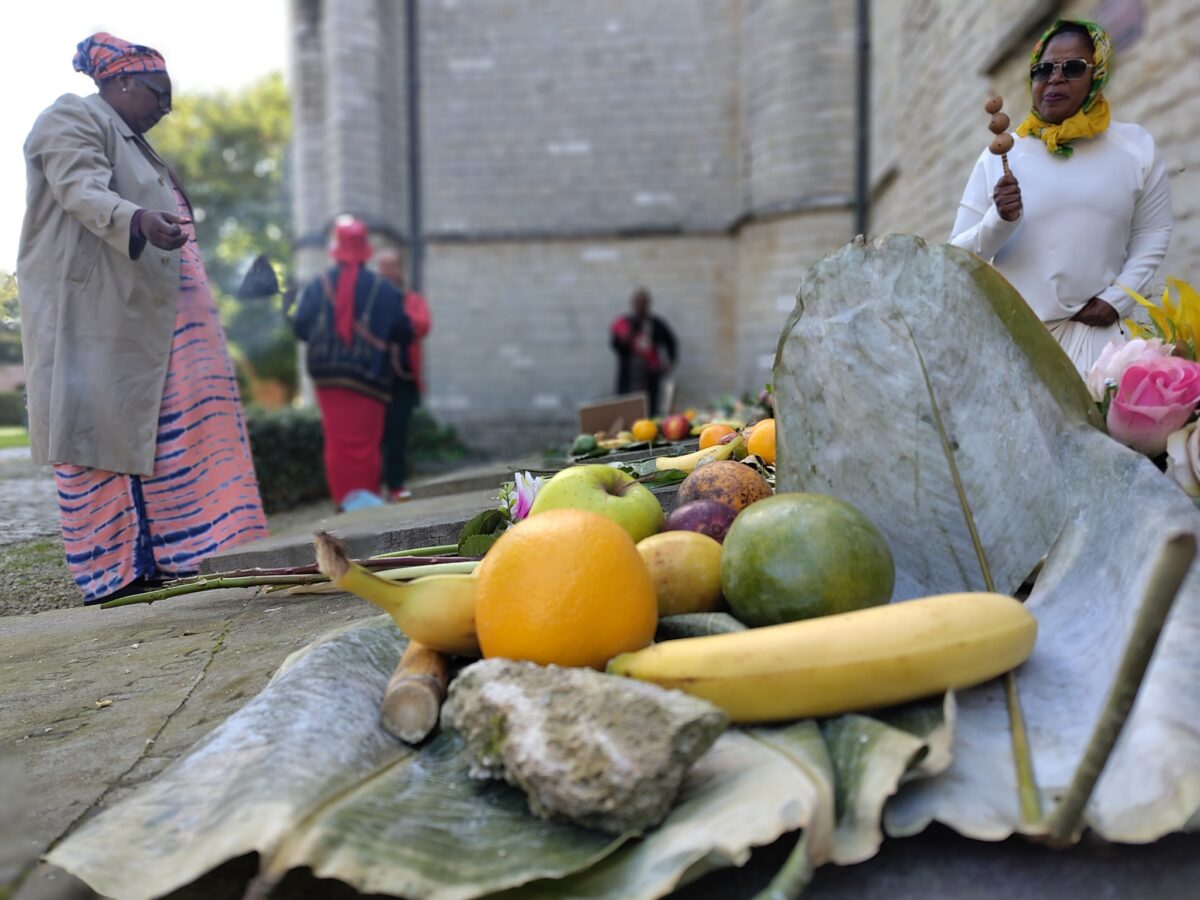Over 250 Congolese were forcibly brought to Tervuren for the International Exhibition, held from May to November 1897. Part of a human zoo, seven died during the cold and wet summer. Two others died in transport to Tervuren. The seven were recently honored.
“This ceremony is about strength, a rejection of colonialism. This is our ceremony,” said Ndo Mbasi, who had come to Tervuren to pay respects to Sambo, Mpemba, Ngemba, Ekia, Nzau, Kitukwa, and Mibange. These seven victims were only granted a proper burial in 1953 at the Sint-Jan Evangelist church in Tervuren. For half a century, they lay in unconsecrated ground—typically reserved for adulterers, illegitimate children, and suicides.
The seven are known as Bangala chief Ekia, from N’goumba; Gemba from Kongo-Central; soldier Kitoukwa, born in German Tanganyika, M’peia from Bokoulengila, Sambo from Yenga, Mayombe; fisherman Zao from Buku-Zobe, Mayombe, and soldier Mibange from Makwoingi.

“It’s a disgrace for the commune. The mayor must be told—these people deserve to be returned to Congo. At that time, they weren’t even treated as human,” Mbasi told Tervuren+, also expressing disappointment at “nothing” being done to improve on the neglected state of the graves — also a somber reminder of Belgium’s colonial past.
Belgium’s human zoos did not end with the seven victims in Tervuren in 1897. One of the last was eight-month-old Juste Bonaventure Langa. He died on May 8, 1958, after being brought to Belgium for the Congolese village at Expo ’58. Juste is now buried in the children’s section of Tervuren’s town cemetery.
The legacy of Belgium’s colonialism is further reflected in the infrastructure of Tervuren, such as the Tervurenlaan and the tram from Cinquantenaire to Tervuren, both built for the 1897 exhibition. And of course the AfricaMuseum. There, Congolese artist Freddy Tsimba’s work pays homage to the victims of past and present violence. And eight figures confronting the museum’s walls are a powerful tribute to the lives lost and affected by colonial brutality.
© Article and photos are licensed under the Attribution-ShareAlike 4.0 International license.

